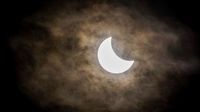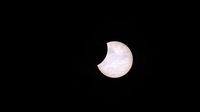A partial solar eclipse will be visible across Switzerland on Saturday, March 29, 2025, offering a rare celestial spectacle for skywatchers. The event will begin around 11:20 AM as the moon starts to move in front of the sun, with the maximum eclipse occurring between 12:02 PM and 12:07 PM. Depending on the location, about one-sixth of the sun will be obscured during this peak moment.
In Geneva, the eclipse will start early, with the sun being covered by the new moon from 11:14 AM. Other cities will experience the eclipse at slightly different times: Bern at 11:17 AM, Basel at 11:18 AM, Zurich at 11:20 AM, and Chur at 11:22 AM. This staggering of times across the country is due to the geographical differences in the west and east of Switzerland.
Experts are urging caution as the solar eclipse approaches. The Swiss Astronomical Society has emphasized the importance of protecting one’s eyes during the event, warning that looking directly at the sun without proper protection can cause serious damage. They noted, "The sun is not more dangerous during a solar eclipse than on any other clear day," but still advise against unprotected viewing.
As the moon begins to cover the sun, observers will notice a distinct change in the sunlight, akin to someone taking a bite out of the sun. This visual effect will be most pronounced at the maximum eclipse, where the moon will obscure a significant portion of the solar disc.
Approximately 90 minutes after the initial contact between the moon and the sun, the partial solar eclipse will conclude. This event is a relatively common occurrence on a global scale, with two to five solar eclipses happening each year worldwide. However, total solar eclipses are much rarer, and the next one visible from Switzerland will not occur until September 3, 2081.
As excitement builds for this astronomical event, many are also curious about how to best photograph the eclipse. Experts recommend using special solar filters or eclipse glasses to safely capture the moment. The anticipation surrounding the eclipse is palpable, with many eager to witness the unique phenomenon.
In summary, the partial solar eclipse on March 29 is not only a chance to observe a beautiful natural occurrence but also an opportunity for education about solar phenomena and the importance of eye safety. As the moon passes in front of the sun, it serves as a reminder of the wonders of our solar system and the need for responsible observation practices.





